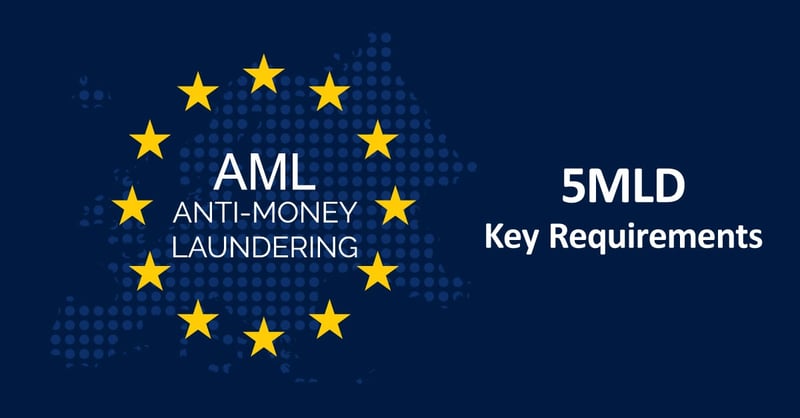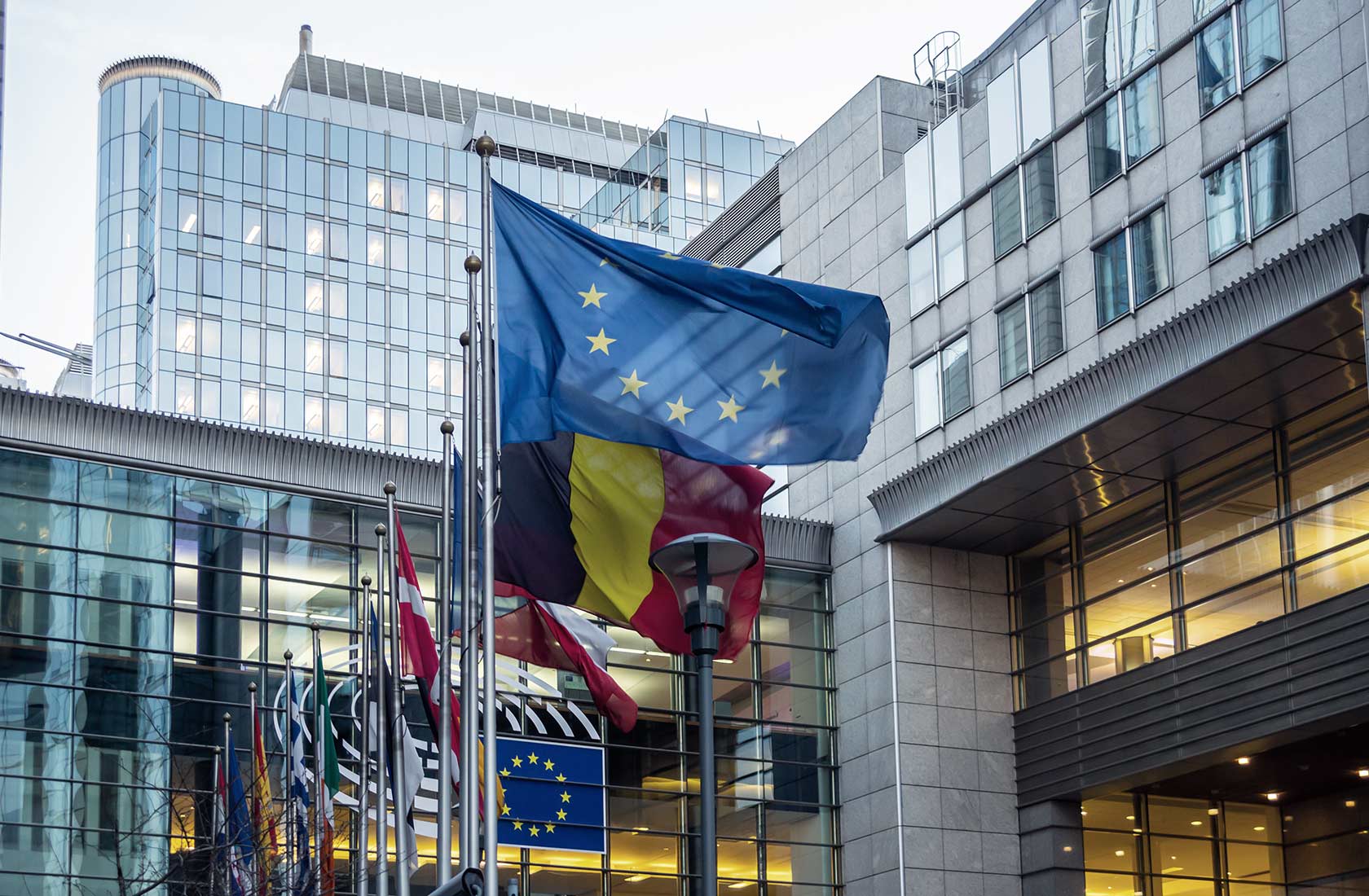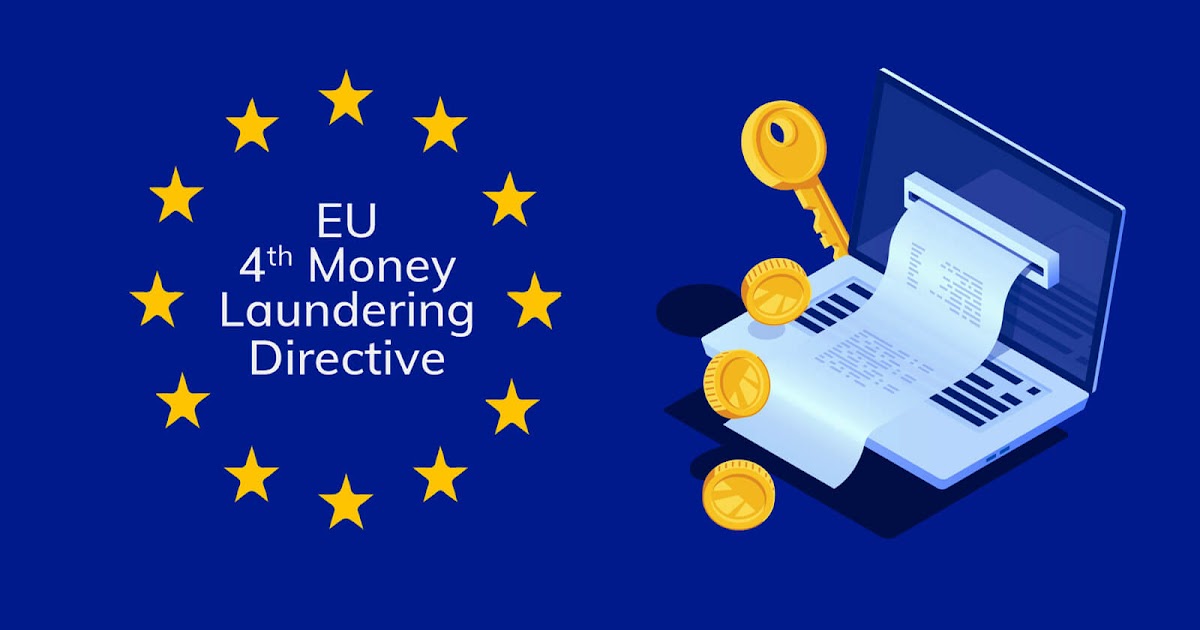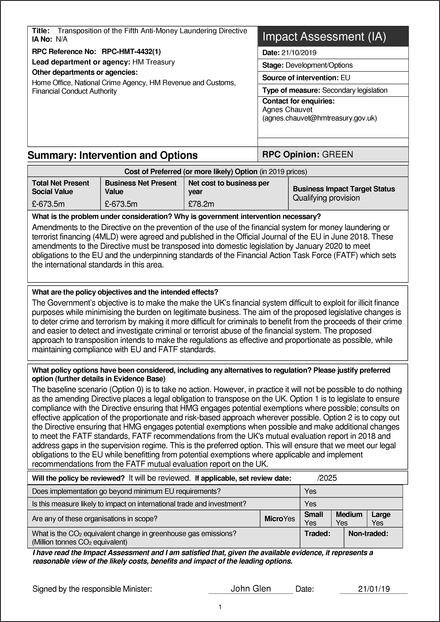Your 4th money laundering directive key changes images are ready in this website. 4th money laundering directive key changes are a topic that is being searched for and liked by netizens today. You can Get the 4th money laundering directive key changes files here. Get all free vectors.
If you’re searching for 4th money laundering directive key changes pictures information linked to the 4th money laundering directive key changes keyword, you have pay a visit to the right blog. Our website always gives you hints for downloading the highest quality video and image content, please kindly hunt and find more enlightening video articles and images that match your interests.
4th Money Laundering Directive Key Changes. The sanctions for firms and individuals who dont comply with the Fourth Money Laundering Directive have also been updated and it is now mandatory for EU countries to impose these sanctions. The main proposed changes as implemented by the 4th AML Directive are outlined below. CDD Simplified CDD will no longer be applicable in most circumstances. The Fourth Anti-Money Laundering Directive 2015849EU the Directive is the most significant of these legislative changes to affect EU member states see box Serious Crime Act 2015.
 5th Money Laundering Directive Overview They Update The Uk S Aml Regime To Incorporate International Standards Set By The Financial Action Task Force Fatf And To Transpose The Eu S 5th Money Laundering From financialcrimes.vercel.app
5th Money Laundering Directive Overview They Update The Uk S Aml Regime To Incorporate International Standards Set By The Financial Action Task Force Fatf And To Transpose The Eu S 5th Money Laundering From financialcrimes.vercel.app
The changes will come into force by 30 June 2017. The Fourth Anti-Money Laundering Directive 2015849EU the Directive is the most significant of these legislative changes to affect EU member states see box Serious Crime Act 2015. Some of the key changes that the Fourth Money Laundering Directive present are. What are the key points. The ultimate beneficial owner of a corporate client will need to be determined and due diligence checks performed. The EU 6AMLD continues to extend and strengthen measures to combat anti-money laundering across member states.
4th Money Laundering Directive Key Changes and how it will impact you The new Fourth Money Laundering Directive EU 2015849 was passed by the EU in June 2015 and will be implemented in the UK by June 2017.
This issue occurs consistently in the worlds most prestigious institutions perpetrated by the worlds most prestigious individuals. The Fourth Anti-Money Laundering Directive 2015849EU the Directive is the most significant of these legislative changes to affect EU member states see box Serious Crime Act 2015. 2 Jun 2021. The Fifth Anti-Money Laundering Directive 5AMLD came into effect on the 10th January 2020 and serves to address new issues that have been exposed since the Fourth Anti-Money Laundering Directive which came into force back in 2017. The amendments to the current regime are not extensive and the European Commission has said it does not expect firms to be unduly impacted by the new changes. It came into force on 25 June 2015 and member states must implement the required changes in their domestic legislation by 26 June 2017.
 Source: bankinghub.eu
Source: bankinghub.eu
The 4th EU Money Laundering Directive Key Requirements Money laundering is an issue that allows corrupt individuals to legitimise their illegal activities. The 4th EU Money Laundering Directive. The main proposed changes as implemented by the 4th AML Directive are outlined below. The amendments to the current regime are not extensive and the European Commission has said it does not expect firms to be unduly impacted by the new changes. The changes will come into force by 30 June 2017.
 Source: lavenpartners.com
Source: lavenpartners.com
Member states are required to transpose 6AMLD into national law by 3 December 2020. MLD4 replaces the Third Money Laundering Directive MLD3 and places greater focus on the use by firms of a risk-based approach in relation to AML and CTF. 2015849 4th AMLD entered into force. Those who violate 4AMLDs provisions will face a maximum fine of at least twice the amount of the benefit derived from the breach or at least 1 million. This issue occurs consistently in the worlds most prestigious institutions perpetrated by the worlds most prestigious individuals.
 Source: ec.europa.eu
Source: ec.europa.eu
As most EU member states have completed the transposition of the Fourth Money Laundering Directive 4MLD into their national law there are some key differences to be aware of. Key changes The European Commission published the Fourth Money Laundering Directive and the new W ir eT a ns fR gul to w hc enacted will impact online financial service and payments services providers. Those who violate 4AMLDs provisions will face a maximum fine of at least twice the amount of the benefit derived from the breach or at least 1 million. The Fifth Anti-Money Laundering Directive 5AMLD came into effect on the 10th January 2020 and serves to address new issues that have been exposed since the Fourth Anti-Money Laundering Directive which came into force back in 2017. The 4th EU Money Laundering Directive.
 Source: ccmalta.com
Source: ccmalta.com
The 4th EU Money Laundering Directive Key Requirements Money laundering is an issue that allows corrupt individuals to legitimise their illegal activities. Key changes The European Commission published the Fourth Money Laundering Directive and the new W ir eT a ns fR gul to w hc enacted will impact online financial service and payments services providers. It came into force on 25 June 2015 and member states must implement the required changes in their domestic legislation by 26 June 2017. The 5th Money Laundering Directive 1 5MLD came into force on the 10th January 2020. The Fourth Anti-Money Laundering Directive 2015849EU the Directive is the most significant of these legislative changes to affect EU member states see box Serious Crime Act 2015.
 Source: financialcrimes.vercel.app
Source: financialcrimes.vercel.app
The current draft of the fourth Anti-Money Laundering Directive makes some significant changes to the current European AML regime and it will also impact how money laundering and terrorist financing MLTF risks are managed. 4th Money Laundering Directive Key Changes and how it will impact you The new Fourth Money Laundering Directive EU 2015849 was passed by the EU in June 2015 and will be implemented in the UK by June 2017. The 5th Money Laundering Directive 1 5MLD came into force on the 10th January 2020. EU Member States have to implement the 4th AMLD by 26 June 2017 into national law. The EU 6AMLD continues to extend and strengthen measures to combat anti-money laundering across member states.
 Source: vinciworks.com
Source: vinciworks.com
The main proposed changes as implemented by the 4th AML Directive are outlined below. The Fifth Anti-Money Laundering Directive 5AMLD came into effect on the 10th January 2020 and serves to address new issues that have been exposed since the Fourth Anti-Money Laundering Directive which came into force back in 2017. Some of the key changes that the Fourth Money Laundering Directive present are. As most EU member states have completed the transposition of the Fourth Money Laundering Directive 4MLD into their national law there are some key differences to be aware of. Key changes The European Commission published the Fourth Money Laundering Directive and the new W ir eT a ns fR gul to w hc enacted will impact online financial service and payments services providers.
 Source: skillcast.com
Source: skillcast.com
5MLD is set to build on the regulatory requirements under the 4th Money Laundering Directive 2 4MLD. This issue occurs consistently in the worlds most prestigious institutions perpetrated by the worlds most prestigious individuals. It came into force on 25 June 2015 and member states must implement the required changes in their domestic legislation by 26 June 2017. The Risk-Based Approach The risk-based approach is a mechanism guiding the implementation of requirements as set out in the Directive. Member states are required to transpose 6AMLD into national law by 3 December 2020.
 Source: acamstoday.org
Source: acamstoday.org
2 Jun 2021. The main proposed changes as implemented by the 4th AML Directive are outlined below. The Fifth Anti-Money Laundering Directive 5AMLD came into effect on the 10th January 2020 and serves to address new issues that have been exposed since the Fourth Anti-Money Laundering Directive which came into force back in 2017. As most EU member states have completed the transposition of the Fourth Money Laundering Directive 4MLD into their national law there are some key differences to be aware of. Key changes The European Commission published the Fourth Money Laundering Directive and the new W ir eT a ns fR gul to w hc enacted will impact online financial service and payments services providers.
 Source: tookitaki.ai
Source: tookitaki.ai
The 5th Money Laundering Directive 1 5MLD came into force on the 10th January 2020. 2015849 4th AMLD entered into force. This issue occurs consistently in the worlds most prestigious institutions perpetrated by the worlds most prestigious individuals. MLD4 replaces the Third Money Laundering Directive MLD3 and places greater focus on the use by firms of a risk-based approach in relation to AML and CTF. The 4th EU Money Laundering Directive.
 Source: encompasscorporation.com
Source: encompasscorporation.com
The current draft of the fourth Anti-Money Laundering Directive makes some significant changes to the current European AML regime and it will also impact how money laundering and terrorist financing MLTF risks are managed. Key changes The European Commission published the Fourth Money Laundering Directive and the new W ir eT a ns fR gul to w hc enacted will impact online financial service and payments services providers. CDD Simplified CDD will no longer be applicable in most circumstances. The 5th Money Laundering Directive 1 5MLD came into force on the 10th January 2020. 5MLD is set to build on the regulatory requirements under the 4th Money Laundering Directive 2 4MLD.
 Source: bankinghub.eu
Source: bankinghub.eu
2 Jun 2021. The ultimate beneficial owner of a corporate client will need to be determined and due diligence checks performed. 5MLD is set to build on the regulatory requirements under the 4th Money Laundering Directive 2 4MLD. The 4th EU Money Laundering Directive Key Requirements Money laundering is an issue that allows corrupt individuals to legitimise their illegal activities. There will no longer be automatic exemptions from conducting client due diligence.
 Source: camsafroza.com
Source: camsafroza.com
As most EU member states have completed the transposition of the Fourth Money Laundering Directive 4MLD into their national law there are some key differences to be aware of. The EU 6AMLD continues to extend and strengthen measures to combat anti-money laundering across member states. As most EU member states have completed the transposition of the Fourth Money Laundering Directive 4MLD into their national law there are some key differences to be aware of. The 5th Money Laundering Directive 1 5MLD came into force on the 10th January 2020. The Fifth Anti-Money Laundering Directive 5AMLD came into effect on the 10th January 2020 and serves to address new issues that have been exposed since the Fourth Anti-Money Laundering Directive which came into force back in 2017.
 Source: slideshare.net
Source: slideshare.net
The changes are important for the regulated sector given the increasing focus on AML compliance. The 5th Money Laundering Directive 1 5MLD came into force on the 10th January 2020. The relevant regulations must be implemented by regulated entities within member states by 3 June 2021. The changes are important for the regulated sector given the increasing focus on AML compliance. MLD4 replaces the Third Money Laundering Directive MLD3 and places greater focus on the use by firms of a risk-based approach in relation to AML and CTF.
This site is an open community for users to do sharing their favorite wallpapers on the internet, all images or pictures in this website are for personal wallpaper use only, it is stricly prohibited to use this wallpaper for commercial purposes, if you are the author and find this image is shared without your permission, please kindly raise a DMCA report to Us.
If you find this site beneficial, please support us by sharing this posts to your own social media accounts like Facebook, Instagram and so on or you can also save this blog page with the title 4th money laundering directive key changes by using Ctrl + D for devices a laptop with a Windows operating system or Command + D for laptops with an Apple operating system. If you use a smartphone, you can also use the drawer menu of the browser you are using. Whether it’s a Windows, Mac, iOS or Android operating system, you will still be able to bookmark this website.





